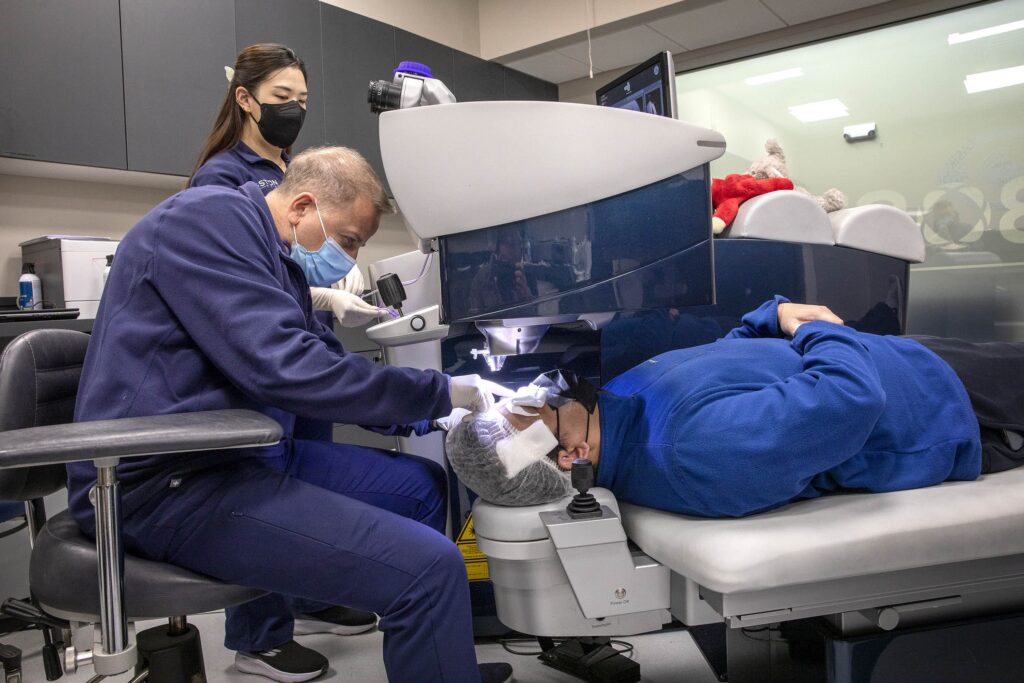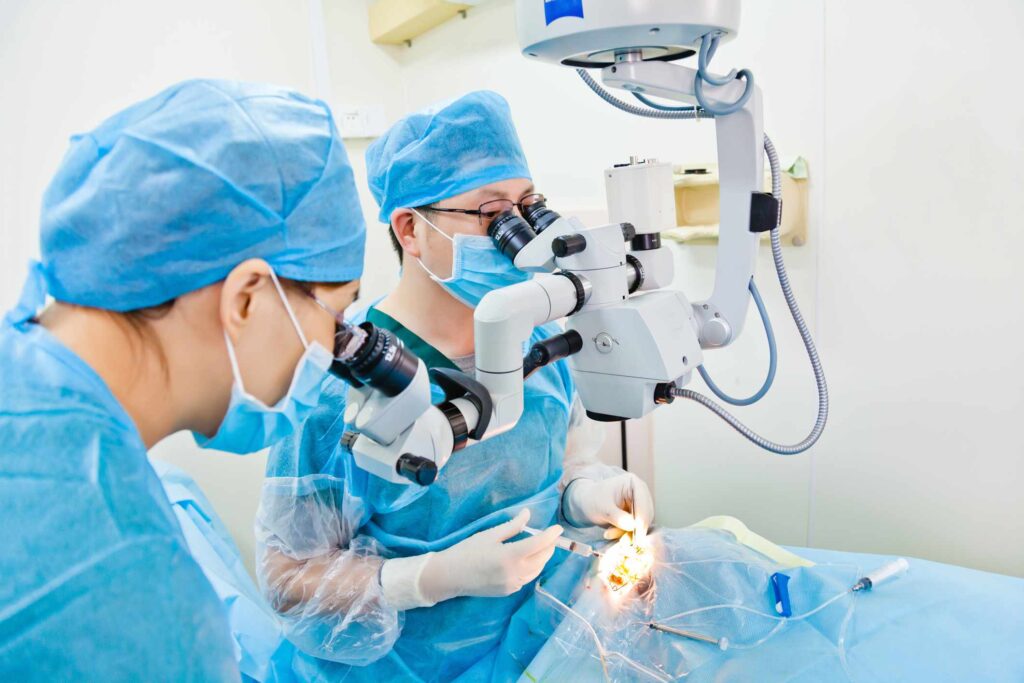
The Journey to Crystal Clear Vision with Expert LASIK Surgery
Have you ever dreamed of having crystal clear vision without the need for glasses or contact lenses? With the advancements in modern medicine, this dream can become a reality through LASIK surgery. LASIK, which stands for Laser-Assisted In Situ Keratomileusis, is a widely popular procedure that has helped millions of people achieve their desired vision. In this comprehensive article, we will take you on a journey to explore the world of LASIK surgery, from understanding the procedure to evaluating its success. So fasten your seatbelt and get ready for the ride of a lifetime!
Understanding LASIK: A Comprehensive Overview
Before delving into the nitty-gritty details, let’s start by demystifying LASIK surgery. So what exactly is LASIK? In simple terms, it is a surgical procedure that corrects refractive errors in the eye, such as nearsightedness, farsightedness, and astigmatism. By reshaping the cornea, the transparent front part of the eye, LASIK aims to improve visual acuity and reduce the need for corrective eyewear.
What is LASIK Surgery?
LASIK surgery involves using a highly precise laser to create a thin flap in the cornea. This flap is then lifted, and another laser is used to reshape the underlying corneal tissue. Once the cornea has been reshaped, the flap is carefully repositioned, acting as a natural bandage. The entire procedure usually takes less than 30 minutes and is virtually painless.
The Science Behind LASIK
To better understand the science behind LASIK, it’s important to know how the cornea contributes to vision. The cornea plays a crucial role in focusing light onto the retina, which then sends signals to the brain for image processing. In individuals with refractive errors, the cornea is either too steep or too flat, causing light to focus in front of or behind the retina, resulting in blurred vision. By reshaping the cornea, LASIK aims to correct these irregularities and bring the image into clear focus.

But how does the laser reshape the cornea? The laser used in LASIK surgery emits a cool ultraviolet light beam that removes microscopic amounts of tissue from the cornea. This precise removal of tissue allows the cornea to be reshaped in a way that corrects the refractive error. The laser is guided by a computer-controlled mapping system that creates a detailed and personalized treatment plan for each patient.
Furthermore, LASIK surgery has evolved over the years with the introduction of advanced technologies. One such technology is wavefront-guided LASIK, which uses a three-dimensional map of the eye to guide the laser during the procedure. This personalized approach takes into account the unique imperfections of each individual’s eye, resulting in even more precise and accurate vision correction.
It’s worth noting that LASIK surgery is not suitable for everyone. Factors such as age, overall eye health, and the stability of the refractive error play a role in determining eligibility for the procedure. A thorough evaluation by an experienced ophthalmologist is necessary to determine if LASIK is the right option for an individual.
In conclusion, LASIK surgery is a remarkable procedure that has revolutionized the field of vision correction. By reshaping the cornea, LASIK aims to improve visual acuity and reduce the reliance on corrective eyewear. The science behind LASIK is rooted in the understanding of how the cornea contributes to vision and how refractive errors can be corrected through precise laser technology. With advancements in technology, LASIK continues to provide individuals with a safe and effective solution for achieving clear and crisp vision.
Preparing for Your LASIK Journey
Embarking on your LASIK journey requires careful preparation and guidance from trained professionals. Let’s explore what to expect before undergoing this life-changing procedure.
Initial Consultation and Eye Examination
The first step in your LASIK journey is to schedule an initial consultation with a reputable LASIK surgeon. During this consultation, the surgeon will conduct a thorough eye examination to assess your overall eye health and determine whether you are a suitable candidate for LASIK surgery. This examination may include tests such as measuring corneal thickness, evaluating refractive errors, and assessing tear film quality. It’s important to provide accurate and detailed information about your medical history, current medications, and lifestyle habits to ensure a successful LASIK outcome.
At the initial consultation, the LASIK surgeon will take the time to explain the procedure in detail and address any concerns or questions you may have. They will discuss the potential risks and benefits of LASIK, as well as the expected recovery process. This open and honest conversation will help you make an informed decision about whether LASIK is the right choice for you.
Pre-Surgery Guidelines and Recommendations
Prior to your LASIK surgery, your surgeon will provide you with specific guidelines and recommendations to optimize your chances of a successful procedure. These may include avoiding contact lenses for a certain period before surgery, maintaining proper eye hygiene, and refraining from using certain medications that can interfere with the healing process. It’s crucial to strictly follow these guidelines to ensure the best possible results and minimize the risk of complications.
In addition to these guidelines, your LASIK surgeon may also recommend certain lifestyle changes to further enhance your overall eye health. This could include incorporating a diet rich in antioxidants and omega-3 fatty acids, as well as practicing good eye care habits such as wearing sunglasses to protect your eyes from harmful UV rays. By making these small adjustments, you can contribute to the long-term success of your LASIK procedure and maintain optimal eye health.
The LASIK Procedure: Step by Step
The day has finally arrived for your LASIK surgery. Let’s take a closer look at the step-by-step process involved in this transformative procedure.
Before we delve into the details, it’s important to note that LASIK surgery is a highly precise and personalized procedure. Each step is carefully executed to ensure the best possible outcome for your vision correction needs.

The Role of the Surgeon
Your LASIK surgeon is the key player in this remarkable journey to improved vision. They bring a wealth of knowledge, skill, and experience to the operating room, making the entire process seamless and efficient.
As you enter the surgical suite, the surgeon will greet you with a warm smile, immediately putting you at ease. They will begin by administering numbing eye drops to ensure your comfort throughout the procedure. These drops help to minimize any potential discomfort or pain, allowing you to relax and focus on the positive transformation that awaits you.
Next, a device called a microkeratome or femtosecond laser is used to create the corneal flap. This delicate step requires precision and expertise. The surgeon’s steady hands guide the instrument, ensuring a smooth and accurate incision. Once the flap is created, it is gently lifted to expose the underlying corneal tissue.
Now comes the moment where the surgeon’s artistry truly shines. An excimer laser, a highly specialized tool, is carefully used to reshape the cornea. The surgeon’s movements are guided by precise measurements obtained during the pre-surgery examination. This personalized approach ensures that your cornea is reshaped to the exact curvature needed for optimal vision correction.
Once the cornea has been reshaped to perfection, the flap is gently repositioned. It’s fascinating to note that the flap adheres naturally without the need for stitches. This remarkable feature of the cornea allows for a quicker recovery time and reduces the risk of complications.
The Role of the Patient
While the surgeon performs the intricate steps of LASIK surgery, the role of the patient is equally important. It’s essential to remain relaxed, keeping your eye steady and focused on a specific target during the procedure. This cooperation and focus allow the surgeon to work with precision and accuracy, ensuring the best possible outcome.
During the procedure, you may feel a slight pressure or a temporary loss of vision as the corneal flap is created and lifted. However, rest assured that these sensations are normal and fleeting. Your surgeon and their team will be there to provide guidance and reassurance throughout the entire process.
Remember, you are an active participant in this remarkable journey towards improved vision. Your trust in the surgeon’s expertise, coupled with your cooperation and obedience to their instructions, will contribute to the overall success of the surgery.
As you embark on this transformative experience, take comfort in knowing that you are in the hands of skilled professionals who are dedicated to helping you achieve the clear vision you’ve always desired.

Post-Surgery Care and Recovery
Congratulations, you’ve successfully completed your LASIK surgery! Now it’s time to ensure a smooth and speedy recovery.
What to Expect Immediately After Surgery
Immediately after LASIK surgery, you may experience some blurry vision and discomfort, similar to that of having an eyelash in your eye. However, these side effects are temporary and usually subside within a few hours or days. Your surgeon may provide you with specific eye drops and medications to promote healing and prevent infection. It’s important to follow the post-operative instructions diligently to facilitate a speedy recovery.
Long-Term Care and Maintenance
To maintain the benefits of your LASIK surgery in the long run, it’s crucial to adopt good eye care habits. Adherence to a regular schedule of eye exams, proper hydration, and protection from harmful UV rays can all contribute to the preservation of your newfound crystal clear vision. Additionally, being aware of potential risk factors, such as engaging in contact sports or rubbing your eyes vigorously, can help prevent potential complications.
Evaluating the Success of LASIK Surgery
Now that you’ve completed your LASIK journey, it’s time to evaluate its success and the impact it has had on your life.
Measuring Vision Improvement
One of the most tangible ways to evaluate the success of LASIK surgery is by measuring the improvement in your vision. You may notice a significant enhancement in your visual acuity, with many patients achieving 20/20 or better vision after the surgery. Your LASIK surgeon will conduct follow-up appointments to assess your vision and make any necessary adjustments to ensure optimal outcomes.
Patient Satisfaction and Quality of Life
While visual acuity is an essential aspect of LASIK success, patient satisfaction and improved quality of life are equally important. LASIK has been shown to provide a substantial boost in confidence and independence, allowing individuals to engage in various activities without the hassle of glasses or contact lenses. The freedom to wake up and see the world clearly is a truly life-changing experience that often leads to improved productivity and overall happiness.
As you can see, the journey to crystal clear vision with expert LASIK surgery is an exciting and transformative one. From understanding the procedure to evaluating its impact, each step along the way contributes to the overall success of your LASIK journey. If you’ve been considering LASIK surgery, consult with a reputable LASIK surgeon to determine whether you are a suitable candidate. Who knows, this could be the beginning of your own journey to crystal clear vision!
